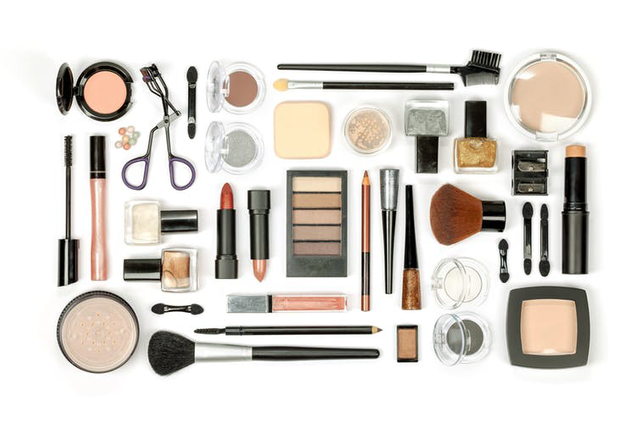Makeup is a daily item for people and non-negotiable for some
Makeup is a daily item for several people and non-negotiable for some. Is it bad for our skin? As continuously, the answer is not clear-cut and depends on the different people, their skin type, and the goods they use.
With an overwhelming choice of skin-deep products offered, maximum people don’t even know where to start with makeup. Organic? Natural? Fragrance-free? Hypoallergenic? Non-comedogenic? What does this all mean, and are they any better?
The term makeup usually describes the group of products that are used for beautification. Other cosmetics include products that are used to clean, treat or protect the skin and hair. These days, though, we normally see all-in-one products, such as BB or CC creams, which combine makeup for coverage together with other elements to provide sun defence and skin benefits.
What does makeup cosmetics do to our skin?
While in maximum cases makeup is harmless, certain products may reason problems for some persons. It’s very important to use makeup and products that are suitable for your skin type or skin condition.
Skin types are approximately classified into four groups:
• oily - excess oil production, large holes, pimples and acne prone
• sensitive - tight, hurtful, intolerant to several products and prone to redness
• dry - dull, rough and prone to itchiness
• normal/combination - may be oily in the T-zone (forehead, nose and chin) but problem-free somewhere else
Although maximum people have a good idea of their basic skin type, they may fail to recognise the being of an underlying skin complaint. Circumstances such as eczema, contact dermatitis, rosacea and sun harm may reason inflammation and disruption of the skin wall.
Inflammation reasons itchiness or tenderness, redness, bumps, though barrier disruption consequences in the tight, subtle, dry skin. These signs can be identical to those produced by reactions makeup products, and so, should be considered before assuming makeup to be the reason

Skin problems caused by cosmetic products
Acne cosmetic is a form of acne activated by the use of certain cosmetic products. It is linked to certain elements that reason come done formation and naturally presents as minor rash-like bumpy pimples. A common misconception is that the makeup actually blocks the pore, whereas actually the block is made of dead skin cells
Mild inflammation outcomes in extra skin turnover and clogging of the hole, with mineral oils being the most common culprit. It’s not always possible to determine makeup cosmetics is the source simply from the component list, as it may be influenced by formulation, quantity and delivery methods.
Symptoms can occur immediately but may take weeks or even months to develop with weaker irritants, making it difficult to identify the cause.Allergic contact dermatitis happens when a person has become sensitised to an element that has been applied to the skin. A red, itchy rash sometimes related to swelling or blisters develops 12-48 hours after contact and may become chronic with ongoing use. The allergen can be very problematic to identify because in some cases the cosmetics are used for months or years before sensitisation happens.

Are there ingredients we should avoid?
Fragrances and preservatives are the maximum common cause of contact allergy occuring from cosmetics.
Other common allergens include preservatives, lanolin, coconut diethanolamide and sunblock agents.
Unless you have a known sensitivity, there are no specific elements that everyone should avoid. But observing for hypoallergenic and non-comedogenic cosmetics is wise.
Those with a sensitive or dry skin type, a fundamental inflammatory skin disorder or history of interaction allergy should try to avoid irritants and possible allergens. Foaming agents, astringent products scrubs and acids tend to be irritating. Hypoallergenic formulations and those affecting sensitive skin are a good choice.
What should I do if you think you might have a reaction?
If you develop a new skin irritation, the first thing to do is to try to check the diagnosis. If you doubtful you are reacting to one of your cosmetics products but not sure which, then preferably you need to stop using all your current cosmetic products in the problem area. You should try to simplify your daily routine, choosing cosmetic products that have been exactly formulated for the subtle and allergic skin.
If the problem settles, you can reestablish your cosmetics one at a time to see whether you can classify the culprit. It’s a good idea to test each one in a small localised area on the neck or face for a week or two before using it all over the face. This process is known as a “repeat open application test”.
If you can’t get to the bottom of it or find cosmetics that don’t irritate your skin, you may need to seek professional help to rule out other skin conditions and formally test for allergies if warranted.
You have a minor misspelling in the following sentence:
It should be occurring instead of occuring.Hi @huriya, I'm @checky ! While checking the mentions made in this post I found out that @hunriya doesn't exist on Steem. Maybe you made a typo ?
If you found this comment useful, consider upvoting it to help keep this bot running. You can see a list of all available commands by replying with
!help.Congratulations! This post has been upvoted from the communal account, @minnowsupport, by Anaya from the Minnow Support Project. It's a witness project run by aggroed, ausbitbank, teamsteem, theprophet0, someguy123, neoxian, followbtcnews, and netuoso. The goal is to help Steemit grow by supporting Minnows. Please find us at the Peace, Abundance, and Liberty Network (PALnet) Discord Channel. It's a completely public and open space to all members of the Steemit community who voluntarily choose to be there.
If you would like to delegate to the Minnow Support Project you can do so by clicking on the following links: 50SP, 100SP, 250SP, 500SP, 1000SP, 5000SP.
Be sure to leave at least 50SP undelegated on your account.